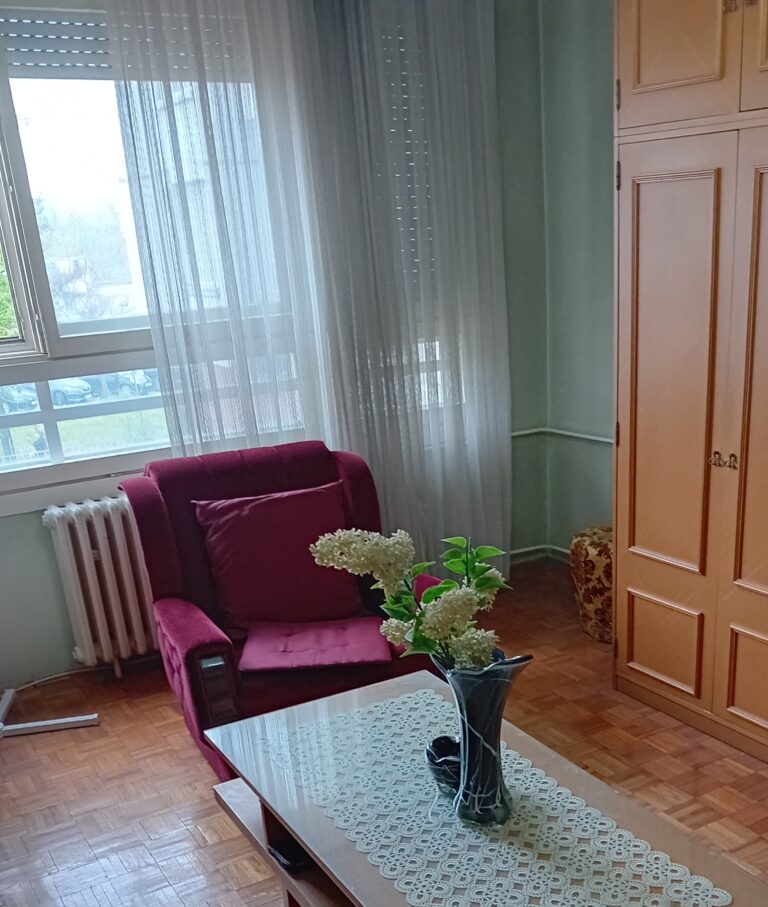First impressions on a website happen in just 50 milliseconds—faster than the blink of an eye. This makes your website header perhaps the most critical element of your entire design.
It sets the tone for your brand, guides navigation, and significantly impacts user engagement. According to Nielsen Norman Group, users often leave web pages within 10-20 seconds, emphasizing the importance of capturing their attention quickly with an effective header. Let’s examine the psychology behind memorable headers, explore essential elements for headers that convert, and present innovative header design trends for 2024 and beyond.
The Psychology Behind Memorable Headers
Website headers are far more than just design elements—they’re psychological triggers that shape how users interact with your entire site. First impressions happen at the top of every website, making headers crucial to growing a healthy online presence.
Eye-tracking studies reveal that users follow predictable visual patterns when scanning a website, with their attention naturally drawn to certain elements within the header.
Effective headers create immediate visual impact while simultaneously communicating your value proposition. They work by leveraging fundamental principles of visual perception and cognitive processing.
Headers guide users through an intuitive journey that feels natural rather than forced when appropriately designed. This creates a sense of familiarity and comfort that encourages further exploration.
The psychological power of headers stems from their ability to instantly communicate three critical things: who you are, what you offer, and why visitors should care. Headers that fail to convey this information often result in higher bounce rates, regardless of how visually appealing they might be.
By understanding the psychology behind how users process visual information, designers can create headers that capture attention and facilitate meaningful engagement.
Building A Header That Works
A well-designed header comprises several critical elements to create a cohesive and functional user experience. Research shows that headers play a vital role in qualifying and converting visitors better than other site elements. Let’s examine the key components that make headers effective.
Logo Placement: Where Eyes Naturally Travel
Logo placement within headers follows specific visual hierarchy principles that align with how users naturally scan websites. Typically, logos are positioned at the top left corner of the header, serving as a key element for brand recognition.
This placement isn’t arbitrary—eye-tracking studies show that Western users typically scan pages in an F-pattern, making the top left a prime location for brand identification.
The logo should be clear, high-resolution, and linked to the homepage for easy navigation. It creates an anchor point that users instinctively recognize as a way to return to your site’s starting point from any page. Eye-tracking research has provided valuable insights into how users interact with logos, showing that they use them as orientation points throughout their browsing journey.
Navigation That Feels Like A Conversation
Effective header navigation helps users find information quickly and efficiently, functioning as a conversation guide between the user and your website.
The horizontal navigation bar is the most common. It lists the website’s main sections, with dropdown menus utilized for more detailed navigation when necessary.
There are differing opinions about whether navigation should remain consistent across all pages. Some experts argue it should be consistent, but not necessarily a written rule – if a page would benefit from a different header/navigation structure, it’s acceptable to adapt.
Others maintain that it should always be the same, with no exceptions, to avoid confusing users who might feel they’ve left the site.
A compelling approach is to keep global navigation consistent for orientation while allowing context-specific adaptations. Exceptional cases exist where using a different (reduced) header makes sense – such as e-commerce checkout funnels, where eliminating “exit points” can increase conversion rates.
Buttons That Whisper (And Sometimes Shout)
Buttons are fundamental UI elements that heavily affect your interaction design and serve as middlemen between users and your product. Button design is crucial in compelling users to convert and carry out desired actions.
A fundamental aspect of button design is ensuring they look clickable. Users should recognize buttons immediately and understand they can be interacted with. Familiar shapes like rounded squares with shadows are practical because they add depth, indicating clickability.
Adding micro-interactions, such as color changes or slight movements on hover, further reinforces this interactivity.
Buttons should use clear, descriptive text rather than generic labels like “OK” or “Cancel.” Specific terms such as “Delete Permanently” or “Cancel Booking” help users understand the button’s action, making interactions smoother. This clarity is essential for reducing user friction and improving the overall user experience.
Creating Visual Paths That Feel Intuitive
Eye tracking provides valuable insights into how users navigate a page, revealing how their focus moves from one item to another on your web page.
These visual pathways should feel natural and intuitive, guiding users toward essential elements without requiring conscious effort.
Effective headers create a clear hierarchy that directs attention in a purposeful sequence.
The 5-part therapy practice website header framework illustrates this approach by structuring elements to naturally guide visitors: starting with a title that identifies pain points and value, followed by a subtitle explaining the solution, complemented by a video that builds a personal connection, visuals showing desired outcomes, and finally, a clear call-to-action.
Visual paths are created strategically using colors, spacing, size differentials, and directional cues. By understanding how these elements influence user attention, designers can develop headers that subtly but effectively direct users toward key information and actions, making the entire experience feel more intuitive and satisfying.
Website Header Ideas Worth Your Time
As we move through 2025, several innovative header design trends are transforming the digital landscape. These approaches balance aesthetic appeal with functional user experience, creating headers that look impressive and perform effectively.
The Minimalist Header’s Quiet Confidence
Minimalist headers create a strong visual impact through simplicity. They allow key information like your brand name or tagline to stand out while keeping the design clean. This approach typically features bold typography and ample white space, creating a sophisticated and contemporary aesthetic.
Designers increasingly use sans-serif fonts in minimalist headers for modern aesthetics, paired with clean layouts that eliminate distractions.
Minimalist headers are particularly effective because they communicate clearly without overwhelming users. The negative space serves a specific purpose—it directs attention to what matters most.
Minimal header designs from top designers showcase how restraint in design elements can create more impactful first impressions. This approach is efficient for brands wanting to project sophistication, confidence, and clarity of purpose.
Sticky Headers That Never Disappear
Sticky (fixed) headers ensure seamless navigation by staying visible as users scroll through content. This trend is beneficial for e-commerce and content-heavy websites where maintaining navigation options constantly improves user experience.
The key to effective sticky headers is compacting them to avoid obstructing the main content area. They serve functional and psychological purposes —providing consistent navigation while reinforcing brand presence throughout the scrolling experience.
Sticky headers are also used to point users’ attention to critical features or calls to action. When implemented thoughtfully, they create a sense of stability and orientation as users explore your content and eliminate the need to scroll back to the top to navigate elsewhere, reducing friction and improving overall site usability.
Transparent Headers With Hidden Depth
While not explicitly detailed in the search results, transparent headers are increasingly popular for creating seamless visual experiences, especially when paired with hero images or video backgrounds.
These headers float over the content beneath them, creating a sense of depth and immersion.They also maintain essential navigation elements while allowing background imagery to show through. In this way creates visual continuity between the header and the content below, making the entire page feel more cohesive and expansive.
The effectiveness of transparent headers depends on carefully considering the contrast between the header elements and background content. They create sophisticated, modern aesthetics when implemented properly while maintaining full functionality.
Animated Headers With Purpose
When used purposefully, animation in headers can significantly enhance user engagement and communicate brand personality. While animation wasn’t explicitly detailed in the search results, micro-interactions like color changes or slight movements on hover were mentioned as ways to reinforce button interactivity.
Effective header animations serve specific purposes rather than existing merely for visual interest. They might progressively reveal information, guide attention to essential elements, or add personality to the brand experience. The key is ensuring animations enhance rather than distract from the core purpose of the header.
Well-executed animated headers combine technical sophistication with restraint, creating moments of delight without compromising usability or loading performance. They’re particularly effective for creative brands, entertainment websites, and digital experiences that convey energy and personality.
Headers With Personalization
While the search results don’t explicitly address personalized headers, this emerging trend leverages user data to create tailored header experiences. Personalization might include adapting header content based on user location, browsing history, or account information.
Personalized headers can significantly improve relevance and conversion rates by showing users exactly what matters most to them. Examples include displaying local weather or events, highlighting recently viewed products, or changing messaging based on where users are in the customer journey.
As AI and machine learning capabilities advance, we can expect more sophisticated personalization in headers, creating experiences that feel uniquely tailored to each visitor while maintaining a coherent brand identity.
Headers That Break Tradition
Sometimes, breaking conventional header design rules creates memorable experiences that set brands apart. There are legitimate reasons to deviate from standard practices when they serve specific purposes.
For example, e-commerce sites often use reduced headers during checkout to eliminate distractions and increase conversions.
Full-width header designs that utilize the entire screen create immersive experiences perfect for showcasing high-quality visuals. These
expansive headers break from the traditional contained design approach, creating dramatic first impressions.
When considering unconventional header approaches, it’s essential to ensure that the benefit from breaking the rule is significantly higher than the benefit from keeping with convention.
The key is making deliberate, purposeful choices rather than simply being different for its own sake. As one expert notes, “There is no «always» in design, i.e., no general principles that are right all the time. Every best practice/rule/imperative/… has its exceptions.”
Final Words:
Website headers are far more than decorative elements – they’re critical conversion tools that shape user perception and behavior from when visitors arrive. As we’ve seen, effective headers combine psychological understanding with strategic design to create experiences that feel intuitive while driving desired actions.
Whether you choose a minimalist approach that speaks through simplicity, a sticky header that maintains constant presence, or an unconventional design that breaks tradition, the most successful headers clearly focus on user needs and business objectives.
They balance aesthetic appeal with functional purpose, creating first impressions that capture attention and convert visitors into engaged users.
As digital experiences evolve, headers will undoubtedly incorporate more sophisticated personalization, animation, and interactive elements. However, the fundamental principles of clarity, usability, and purposeful design will remain essential for creating headers that genuinely work.
By understanding the psychological underpinnings and practical implementation of effective header design, you can create digital experiences that make powerful first impressions and guide users naturally through meaningful interactions with your brand.


















+ There are no comments
Add yours